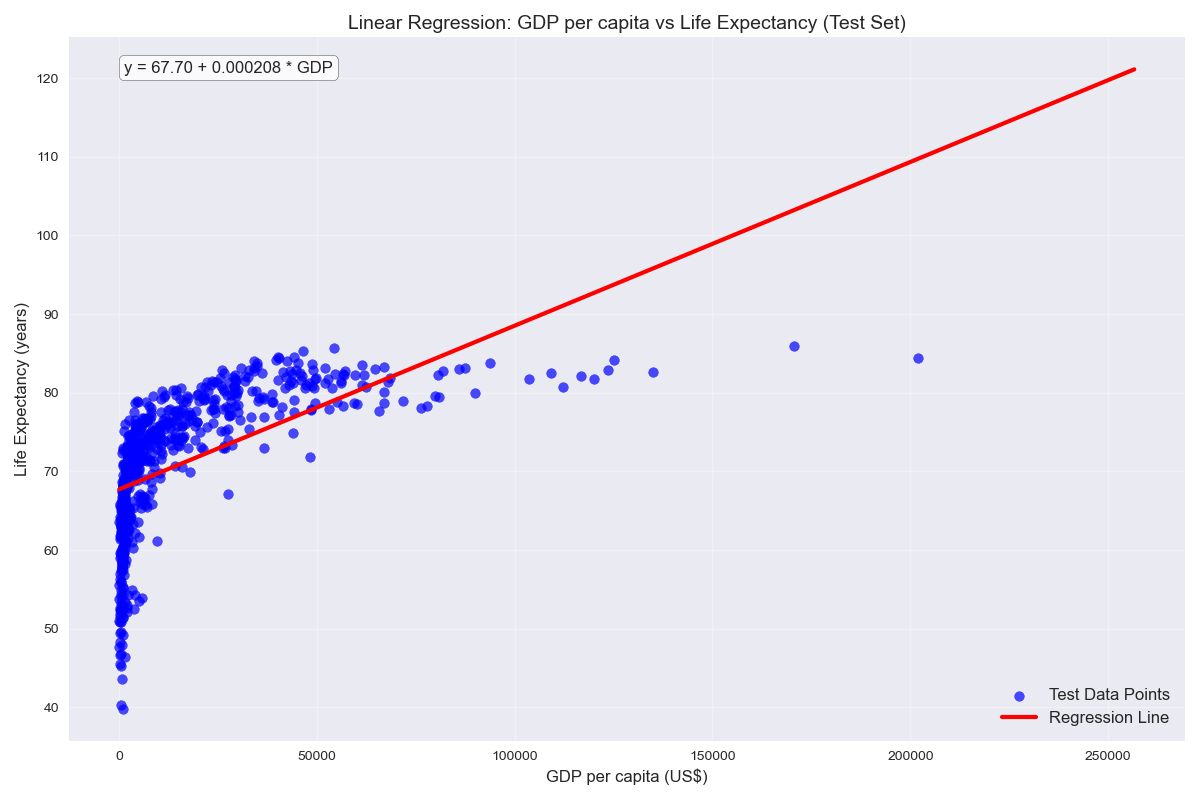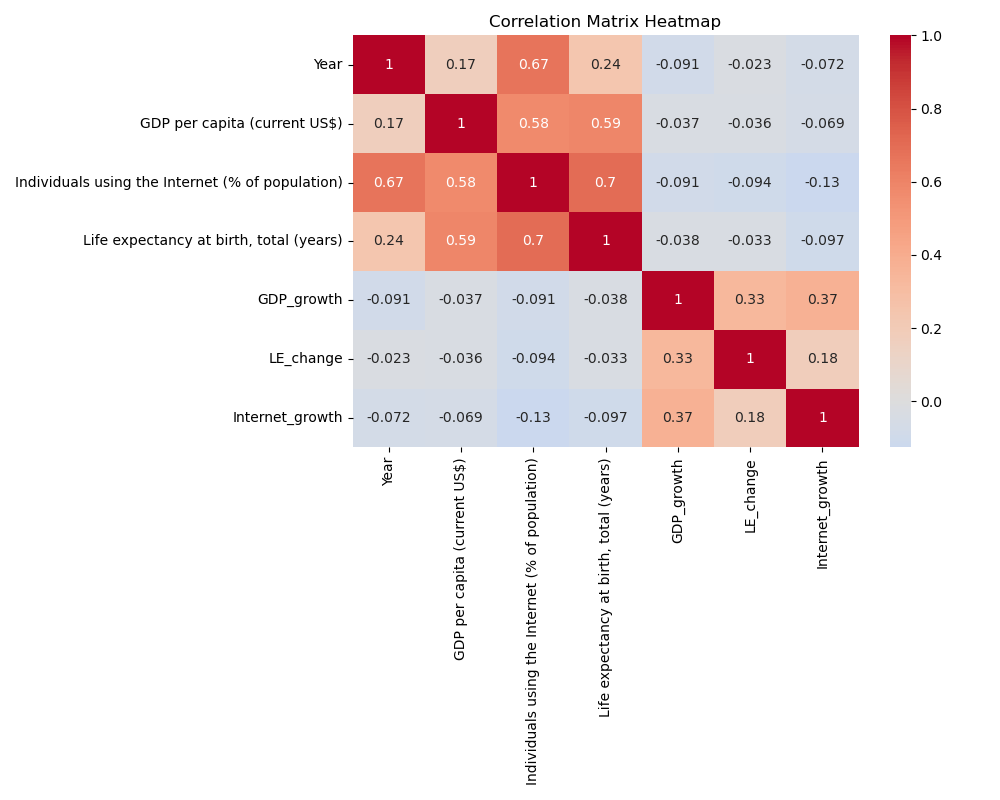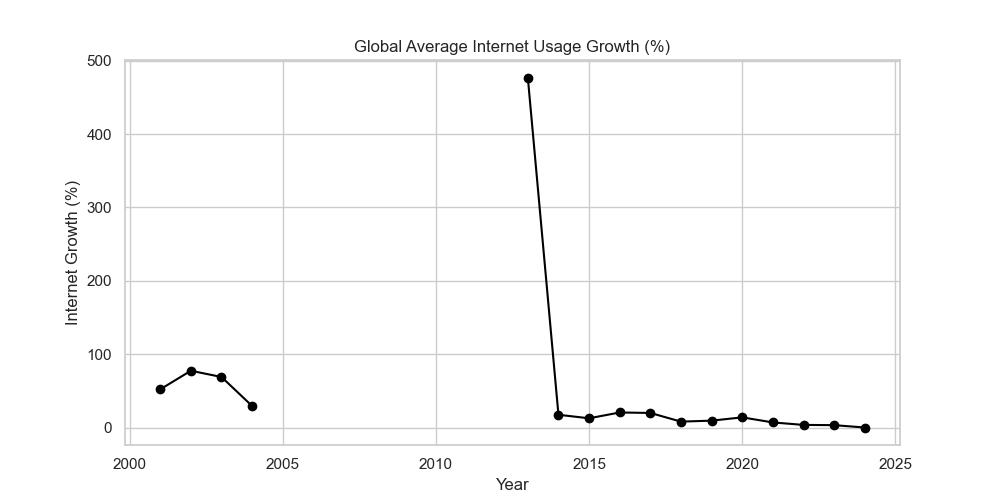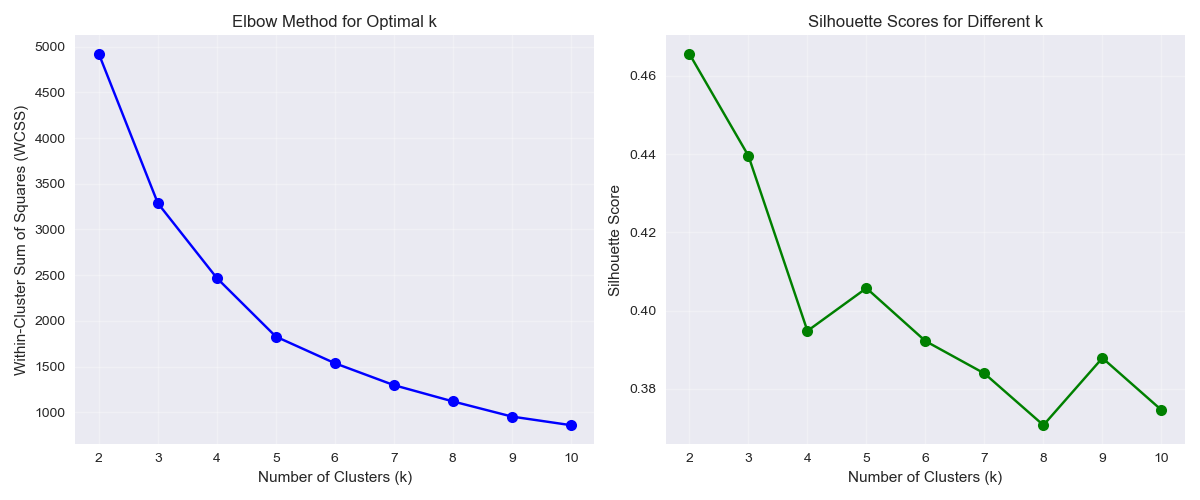Global Development Trends Analysis
Economic Indicators & Country Development Metrics

Project Overview
Goal:
Analyze global development data to identify patterns, economic trends, and correlations between development indicators across 200+ countries.
Business Problem:
Provide data-driven insights for policymakers, NGOs, and international organizations to make informed decisions about resource allocation and development strategies.
My Role & Process:
- Data Collection & Integration: Aggregated data from World Bank, UN, and global health databases
- Exploratory Analysis: Analyzed correlations between economic, health, and education indicators
- Regional Analysis: Identified patterns across different geographic regions and income levels
- Insights Generation: Created predictive models and strategic recommendations for development planning
Data Analysis & Visualizations

GDP vs Life Expectancy
Linear regression analysis showing the relationship between GDP per capita and life expectancy.
Key Finding: 0.000208 coefficient indicates that for every $1,000 increase in GDP per capita, life expectancy increases by approximately 0.2 years.

Variable Correlations
Heatmap showing relationships between key development indicators.
Key Finding: Strong positive correlation 0.70 between internet usage and life expectancy, suggesting digital access may impact health outcomes.

Internet Usage Growth
Trend analysis of global internet adoption over time.
Key Finding: Rapid growth in internet usage with a 500% increase from 2000 to 2025, indicating accelerating digital transformation.

Country Clustering Analysis
Elbow method and silhouette scores for determining optimal country clusters.
Key Finding: Optimal clustering at k=4 with silhouette score of 0.46, suggesting four distinct development groups among nations.
Analytical Insights
- Economic-Health Relationship: The regression model (y = 67.70 + 0.000208 * GDP) explains how economic prosperity correlates with longer life expectancy, with diminishing returns at higher GDP levels.
- Digital Divide Impact: The strong correlation (0.70) between internet usage and life expectancy highlights the importance of digital infrastructure in development strategies.
- Development Trajectories: Cluster analysis reveals four distinct country groups with different development patterns, enabling targeted policy interventions.
- Growth Dynamics: Internet adoption has grown exponentially, suggesting technology as a key driver in recent development progress.
Key Findings & Impact:
Strategic Insights:
- Identified strong correlation between internet access and health outcomes (r=0.70)
- Quantified GDP impact on life expectancy with predictive regression model
- Segmented countries into 4 development clusters for targeted interventions
- Documented exponential growth in internet adoption as development accelerator
- Provided data-driven recommendations for international development strategies